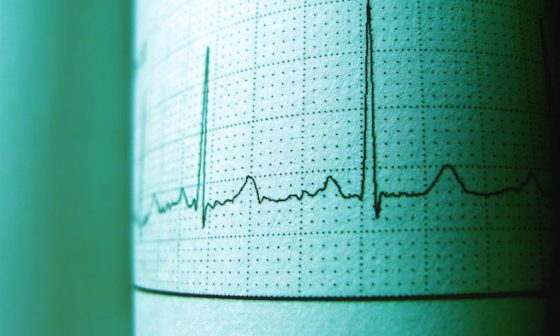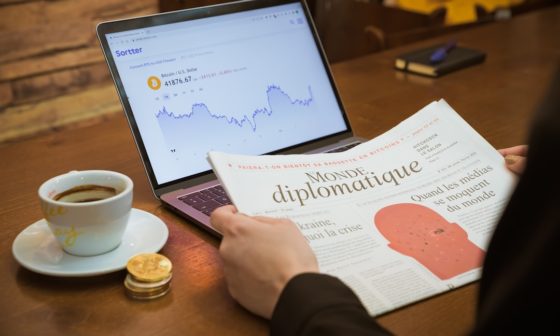If you’re looking for a technical pattern that can help you identify a potential trend reversal, the rounding pattern is worth considering. This chart can be referred to as reversal pattern.
In this post, we’ll explore what the rounded top pattern is, how to identify the actual pattern on a chart, and some potential trading strategies to consider.
What is the Rounding Top Chart Pattern?
The rounding top pattern is a chart pattern that forms when the price of an asset moves up in a relatively smooth and consistent pattern before a gradual price shift and reversing course. The rounding top pattern is characterized by a gradual curve in the price action that looks like a rounded top, hence the name. The pattern is often seen as a potential reversal signal, as it indicates that buying pressure is gradually being replaced by selling pressure resulting in a bearish trend.
One of the key features of the rounding top pattern is the gradual and consistent price curve. This curve typically lasts for several weeks or even months, depending on the timeframe of the chart being used.
During this period, the price action remains relatively stable, with buyers driving the price higher as they continue to accumulate positions. However, as the price approaches its peak, sellers begin to emerge and start to push the price down.
Identifying the Rounding Top Chart Pattern
To identify a rounding top pattern on a chart, look for a relatively smooth uptrend in the price of an asset that begins to lose momentum and form a curve. The curve should be relatively consistent and resemble a rounded top, with the price action gradually flattening out or even turning downward.
One way to confirm a rounding top is to look for a break below the support level in the opposite direction of the rounding top, which is often marked by the lowest point in the curve of the pattern which is called the neckline resistance level. If the price breaks below this level, it could be a signal that the pattern is complete and a trend reversal is underway. Traders can look for short positions as the candle closes below the neckline.
It’s worth noting that rounding top patterns can take on a variety of shapes and sizes depending on the asset being analyzed and the timeframe being used. Some rounding tops are relatively shallow, with a gradual curve that is less pronounced, while others are much more dramatic and pronounced.
Trading the Rounding Top Chart Pattern
If you’re interested in trading the rounding top pattern, there are a few potential strategies to consider.
One approach is to wait for the pattern to complete and look for a break below the support level as a potential entry signal for a short position. You can set a stop-loss order above the resistance level to limit potential losses.
Another strategy is to use the rounding top pattern as a confirmation signal for other technical indicators, such as moving averages or trend lines. If the rounding top pattern confirms other signals of a potential trend reversal, it can be a strong signal to enter or exit a position.
Rounding bottom pattern
The rounded bottom pattern is the opposite of the rounding top pattern and is a bullish chart pattern that signals a potential trend reversal. Also known as the saucer bottom, this pattern forms when the price of an asset moves down in a relatively smooth and consistent pattern before gradually bottoming out and reversing course.
It is the same chart as rounding top pattern, the rounding bottom chart pattern is characterized by a gradual curve in the price action that looks like a rounded bottom. This curve typically lasts for several weeks or even months, depending on the timeframe of the chart being used indicating a bullish pattern.
During this period, the price action remains relatively stable, with sellers driving the price lower as they continue to unload positions. However, as the price approaches its bottom, buyers begin to emerge and start to push the price up resulting in a bullish trend.
Potential Trading Strategies for the Rounding Top Pattern
Support level breakout: Wait for the rounding top pattern to complete and look for a break below the support level as a potential entry signal for a short position. You can set a stop-loss order above the resistance level to limit potential losses.
Moving average crossover: Use a moving average crossover strategy to confirm the rounding top pattern. For example, you could use a 50-day moving average and a 200-day moving average, and look for a crossover to the downside as a signal to enter a short position.
Trend line break: Draw a trend line connecting the highs of the rounding top pattern and wait for a break below this line as a signal to enter a short position.
Profit Target for the Rounding Bottom Formation
Profit targets for the rounding bottom formation can be set by measuring the distance between the bottom of the curve and the resistance level. This distance is known as the “neckline,” and it represents the potential price target for the pattern.
Traders can use this distance to set their profit targets and look for potential price targets beyond the neckline. Another approach is to use a trailing stop loss order to capture any potential gains while minimizing potential losses.
This strategy involves setting a stop-loss order at a certain percentage below the current market price and adjusting the stop loss order as the price moves in the trader’s favor. By using a combination of profit targets and stop loss orders, traders can effectively manage their risk and maximize their potential gains when trading the rounding bottom formation.
Key Takeaways
The rounding bottom pattern is a bullish chart pattern that signals a potential trend reversal pattern, whereas the rounding top pattern is a bearish chart pattern.
The pattern is characterized by a gradual curve in the price action that looks like a rounded bottom.
To identify a rounding bottom pattern, look for a relatively smooth downtrend that begins to lose momentum and form a curve.
Traders can confirm a rounding bottom pattern by looking for a break above the resistance level, which is often marked by the highest point in the curve of the pattern.
When trading the rounding bottom pattern, it’s important to manage risk effectively by using stop loss orders and setting realistic profit targets.
Technical analysis is a valuable tool for traders who want to identify potential trend reversals and adjust their positions accordingly. By understanding the rounding bottom pattern and other chart patterns, traders can make more informed trading decisions and potentially increase their chances of success in the markets.
These patterns are also called long-term reversal patterns.
Conclusion
The rounding top chart pattern is a useful tool for technical analysts who are looking for potential trend reversals. By identifying the curve in the price action, traders can be alerted to a potential change in the market’s sentiment and adjust their positions accordingly.






